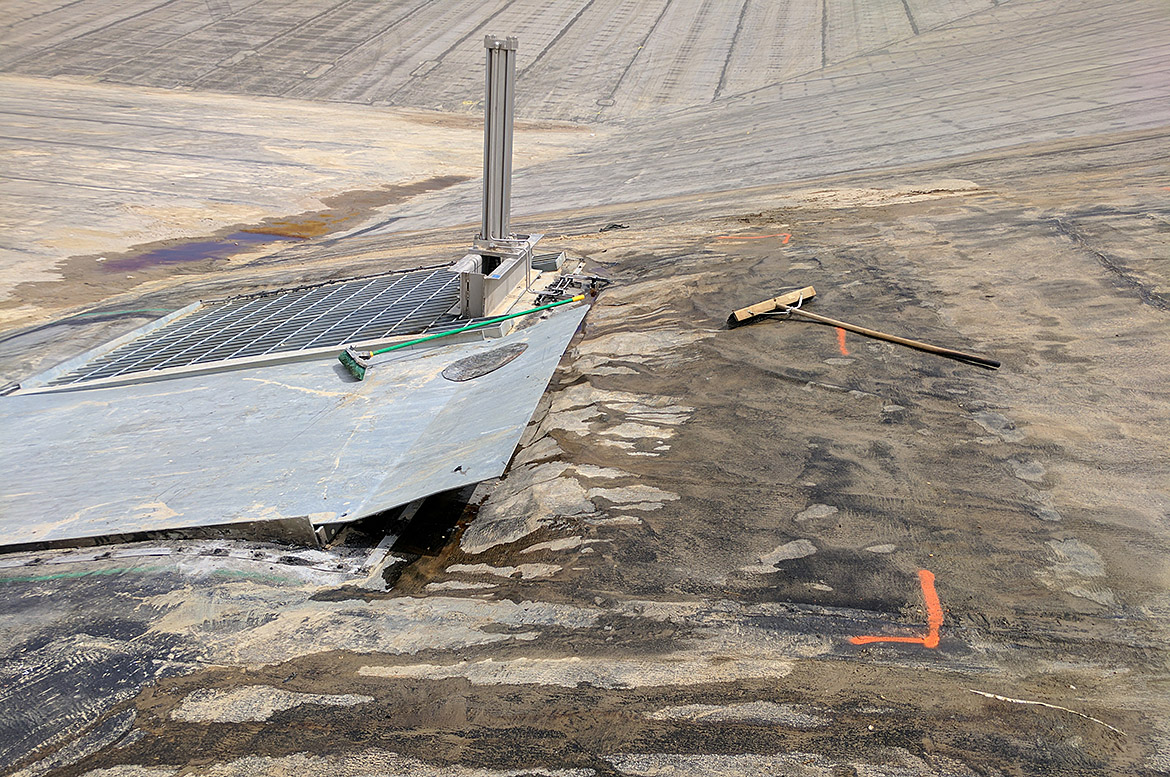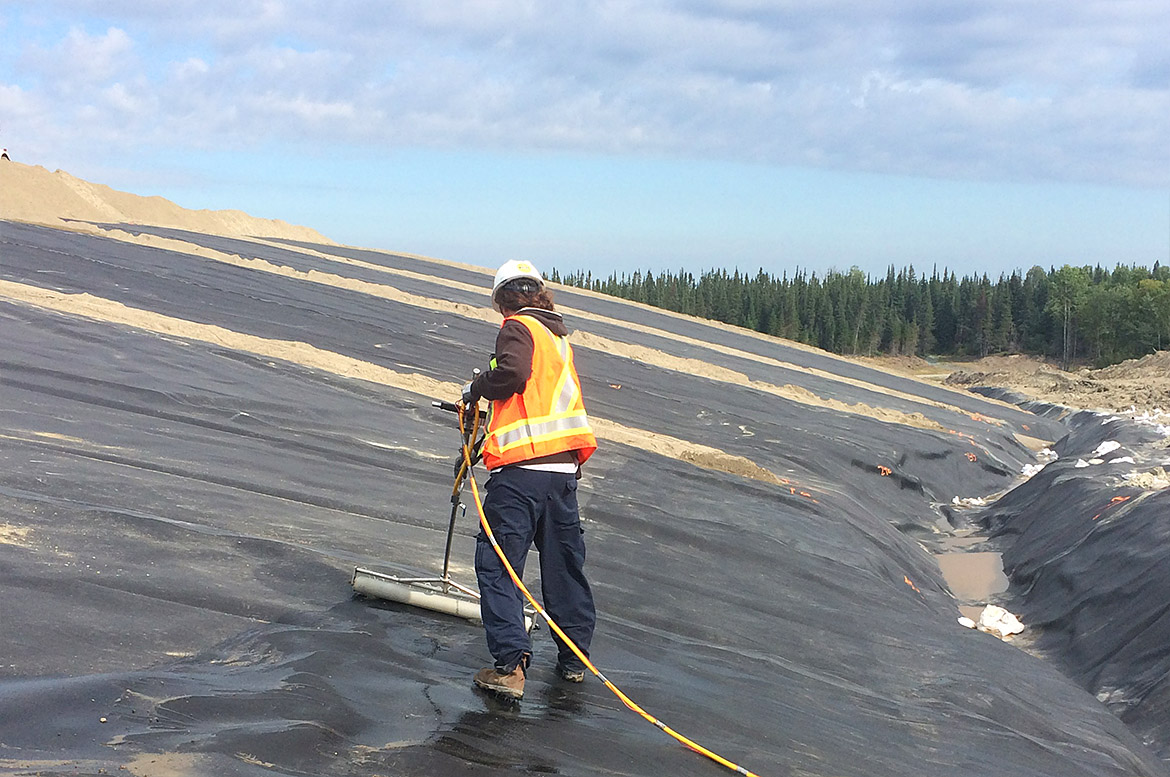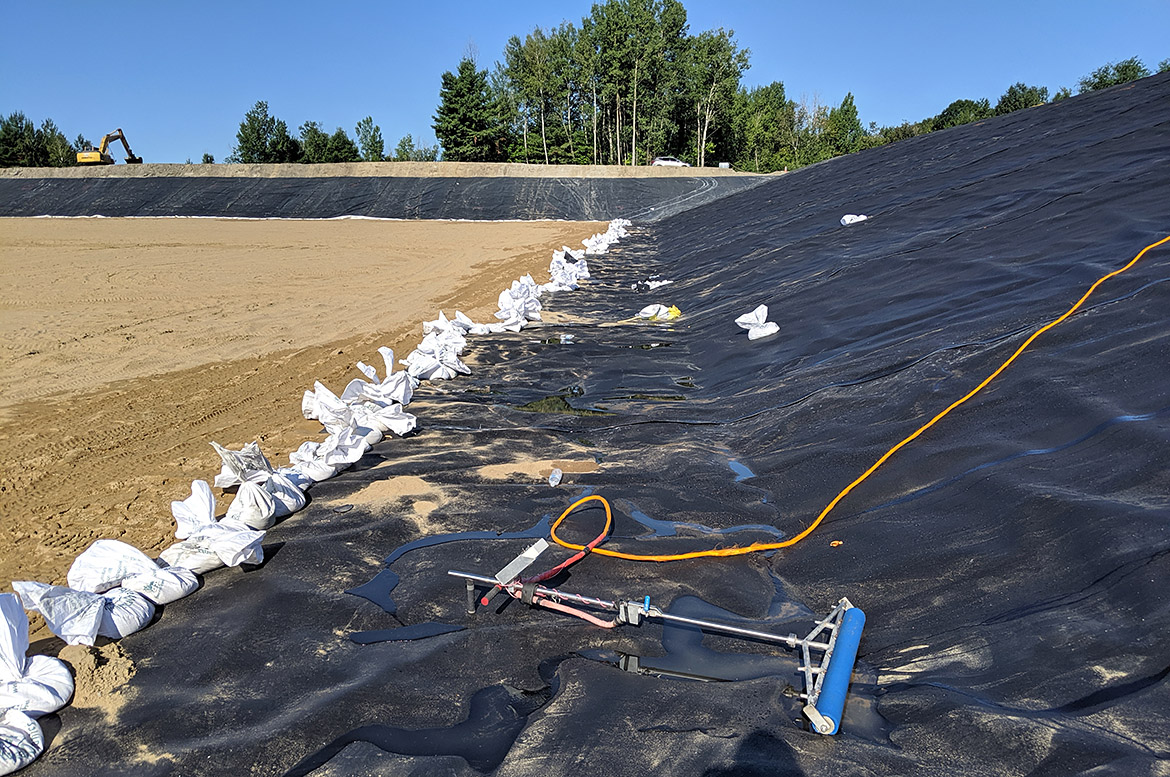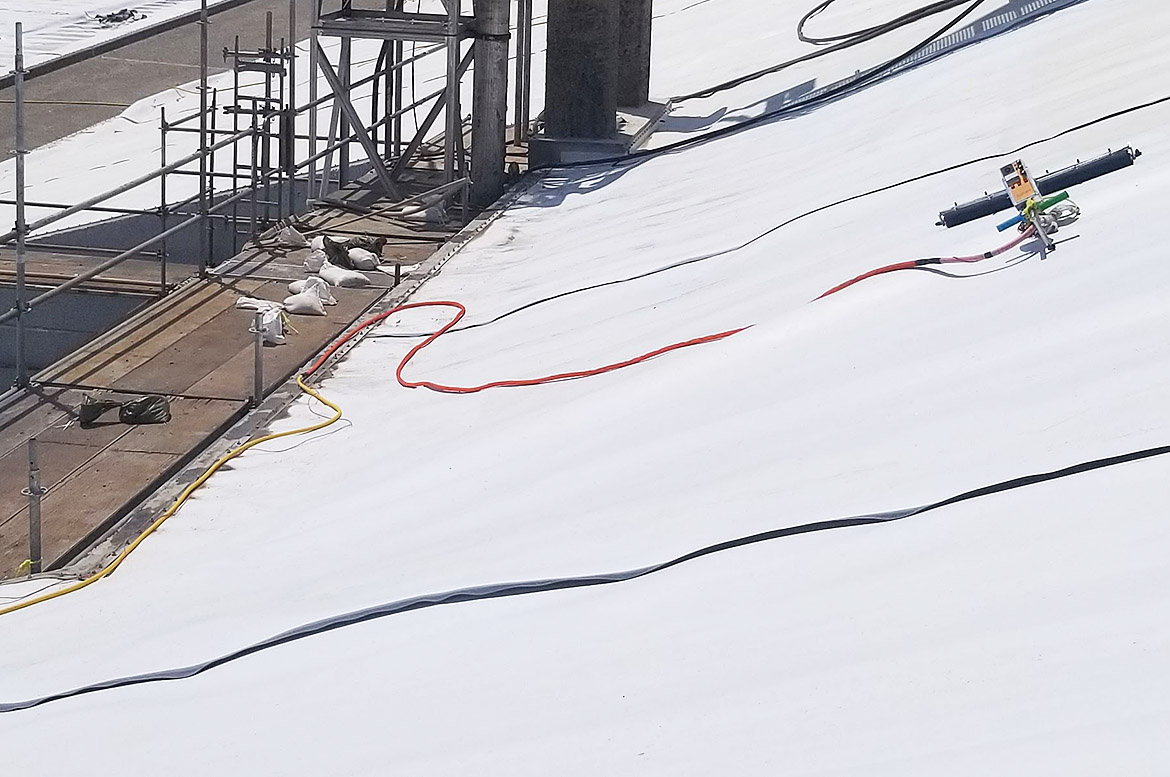
Isolation, Mechanical Anchors and the Water Puddle Method
The basic principal of all geoelectrical leak location methods is to pass an electrical current through any faults present in the geomembrane, generating electrical signals that can be detected by a qualified operator. Whilst the importance of site preparation is well known for dipole method surveys, it is also a key element of a successful water puddle survey.
In regard to electrical leak location, a mechanical anchor is viewed as a fault in the geomembrane, as each screw allows for current to pass through the geomembrane layer and reach the grounding electrode. Generally, mechanical anchors are installed on vertical sections above the geomembrane layer, posing no problem to the electrical leak location operator. Occasionally however mechanical anchors are installed directly on the basin’s base layer, creating a leak signal when the test water makes contact with the metal anchor.
With advanced notice, this can be avoided by applying a putty to the anchoring section that prevents test water making contact with the metal components. This can also prevent test water overflowing the anchoring and making contact with an external concrete section.
It is important to understand that geoelectrical leak location methods do not allow for the validation of joints between concrete sections and geomembrane layers. Vacuum box testing is also unlikely to be of use here, given the thickness of the mechanical anchor and the difficulty in ensuring an airtight seal between the vacuum box and the joint. The difficulty of effectively verifying these joints makes the installer’s experience, the choice of materials and the quality of the concrete section all the more important.
It is important to understand that geoelectrical leak location methods do not allow for the validation of joints between concrete sections and geomembrane layers. Vacuum box testing is also unlikely to be of use here, given the thickness of the mechanical anchor and the difficulty in ensuring an airtight seal between the vacuum box and the joint. The difficulty of effectively verifying these joints makes the installer’s experience, the choice of materials and the quality of the concrete section all the more important.









